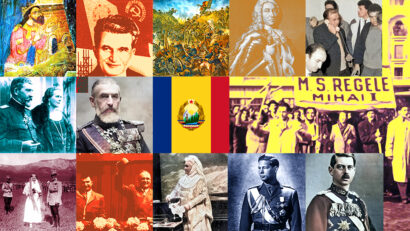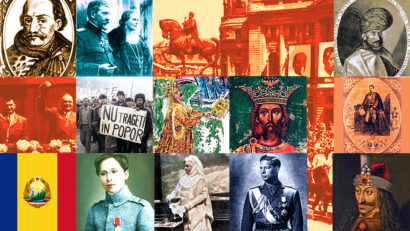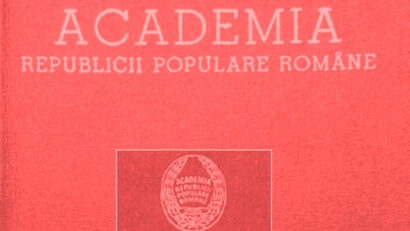Romania according to Emmanuel de Martonne
French geographer Emmanuel de Martonne was one of the greatest fans of Romania in the first half of the 20th Century, even the greatest, according to some. He published studies and maps which had a great influence in the drawing of borders after WWI

Steliu Lambru, 25.11.2018, 18:57
Emmanuel de Martonne studied with the great French geographer Paul Vidal de la Blache, and had started to study the geography of Romania in the first years of the 20th Century, thanks to his friendship with Romanian writer Pompiliu Eliade.
After WWI ended, another kind of war started, that of lobbying and of maps. In fact, the lobbying war was unending, being nothing but the underbelly of the dynamic war.
Gavin Bowd is a professor of French language and culture at St. Andrews University in Scotland. While studying Emmanuel de Martonne, he came upon his studies of Romania.
Bowd said that the Romanian propaganda in the French press was some of the best undertakings of Romanian diplomacy: “It was in France, where the majority of its intellectuals had been trained, that Romania found its most effective and loud support. The Minister for Romania in Paris, Victor Antonescu, would draw up a plan to manipulate, through subsidies, French newspapers, and would create a ‘bureau de presse on 1 January 1918. And so the Romanians would then flood French newspapers with money to finance articles that favoured the Romanian cause. […] Emmanuel de Martonne contributed to this propaganda effort. For example, in March 1918 it was published ‘La Dobroudja, Esquisse historique geographique, etnographique et statistique by Francois Lebrun, correspondent of ‘Le Matin in Romania. And in his preface to this book, de Martonne adds his voice to Romanian protests, he says ‘It is not too late to enlighten public opinion about Dobruja. The painful peace that Romania was forced to sign with a knife to its neck will be revised, as will be the destiny, the fate of the Romanian and Slavic peoples, which are kept under detested yoke.
In his report on Transylvania, de Martonne started to draw the limits of the Hungarian territory that did not correspond with the population with Romanian language and culture. In addition to his scientific prowess, de Martonne had great literary talent, which shows prominently in his scientific writings. He was fascinated by Transylvania, the Carpathians, and Romanian peasants.
The greatest task for Emmanuel de Martonne and the Romanians was their reach for a Greater Romania. Gavin Bowd: “From January 1919 onwards, the Emmanuel de Martonnes geographical expertise was put to the test at the Versailles Peace Conference. In his four long study on the four provinces claimed by Romania, the region, as an organized special entity, was at the heart of his reflections. De Martonne put cartographical language at the service of the Romanian cause. The very title of his coloured map, ‘Distribution of Nationalities in the Lands Where the Romanians Dominate, is hardly what you would call a neutral title for a map, it steers you towards something. I can say that you see that in his use of the colour red. He wasnt alone in the use of the colour red to represent the preponderance of the Romanian population, but it emphasizes the areas where the Romanian population predominates. Whats more, de Martonnes map eliminated populations of less than 25% in any department, and coloured a department according to the rural majority. Urban populations are represented by segmented circles of reduced size. So this cartographic approach demonstrated the influence of his mentor Vidal de la Blache, which tended to favour the more backward and agricultural regions, where there supposedly existed a harmony between land and people. So that regional geography and sympathy for the Romanian peasant came together.
At the peace conference, Emmanuel de Martonne got to realize his dream, a great victory for his passion and knowledge.





























